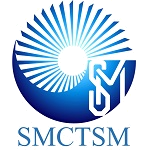Design and simulation of an automatic control gain circuit for sensor systems
Keywords:
CMOS analog design, Automatic gain control, PWL predistortion.Abstract
The role of an Automatic Gain Control (AGC) circuit is to provide relatively constant output amplitude regardless of the signal variations at its input. For this reason, AGC circuits reduce the required input dynamic range of subsequent conditioning circuits for resonant sensors, where information is frequency modulated. An AGC circuit in a 0.35µm and biased with VDD=3V is presented in this paper, to be used in sensor systems operating from DC to 100kHz. The Variable Gain Amplifier is based on a novel technique which uses a pre-distortion piecewise-linear block to exponentially vary the gain. The total harmonic distortion is lower than -54dB and the power consumption of the whole system is 12.4mW. The results were obtained by HSpice simulations.References
. R. Neul et al., IEEE Sensors Journal, 7, 302 (2007).
. W. Sung, S. Sung, J.G. Lee, T. Kang, Journal of Micromechanics and Microengineering, 17, 1939 (2007).
. R.T. M’Closkey, Al. Vakakis, Proceedings of the American Control Conference, pp. 3307-3311 (1999).
. S. Kouno, Journal of Robotics and Mechatronics, 18, 83 (2006).
. A. Arnau, Sensors, vol. 8, pp. 370-411, 2008.
. R. Fenner, E. Zdankiewicz, , IEEE Sensors Journal, 1, 4 (2001).
. J.P. Alegre, S. Celma, B. Calvo, N. Fiebig and S. Halder, , IEEE Transactions on Circuits and Systems II: Express Briefs, 56, 93 (2009).
. D.N. Green, , IEEE Transactions on Circuits and Systems, 30, 78 (1983).
. J. M. Khoury, , IEEE Transactions on Circuits and Systems II: Analog and Digital Signal Processing, 45, 283 (1998).
. C. A. de la Cruz-Blas, A. López-Martín, , IEEE Transactions on Circuits and Systems-II: Express Briefs, 54, 1042 (2007).
. M.T. Sanz, S. Celma, B. Calvo, International Journal of Circuit Theory and Applications, 36, 397 (2008).
. Y. Zheng, J. Yan, Y. P. Xu, Proceedings of the 2004 International Symposium on Circuits and Systems (ISCAS '04), 1, 813 (2004).
. I. H. Wang, S. I. Liu, , IEEE Transactions on Circuits and Systems-II: Express Briefs, 55, 136 (2008).
. C. H. Lin, T. Pimenta, M. Ismail, Proceedings of the 1998 Midwest Symposium on Circuits and Systems, pp. 360- 363, (1998).
. M. S. Bhat, S. Rekha, H. S. Jamadagni, , Proceedings of the 19th International Conference on VLSI Design, p. 6, (2006).
. R. González Carvajal, J. Ramírez-Angulo, A. J. López-Martín, A. Torralba, J. Antonio Gómez Galán, A. Carlosena, Member, F. Muñoz Chavero, , IEEE Transactions On Circuits And Systems—I: Regular Papers, 52, 1276 (2005).
. T. H. Yun, L. Yin, C. Huang, J. H. Wu, L. X. Shi, Proceedings of the IEEE Asian Solid-State Circuits Conference (ASSCC’06), pp. 375-378, (2006).
. D. Moro-Frias, M.T. Sanz-Pascual, C.A. De la Cruz-Blas, Proceedings of the 2010 IEEE International Symposium on Circuits and Systems (ISCAS’10), pp. 2824-2827, (2010).
. D. Whitlow, Microwave Journal, 46, 254 (2003).
. D. Johns, K. Martin, John Wiley & Sons, Ed. (1997).
Downloads
Published
Issue
Section
License
©2025 by the authors; licensee SMCTSM, Mexico. This article is an open access article distributed under the terms and conditions of the Creative Commons Attribution license (http://creativecommons.org/licenses/by/4.0/).





